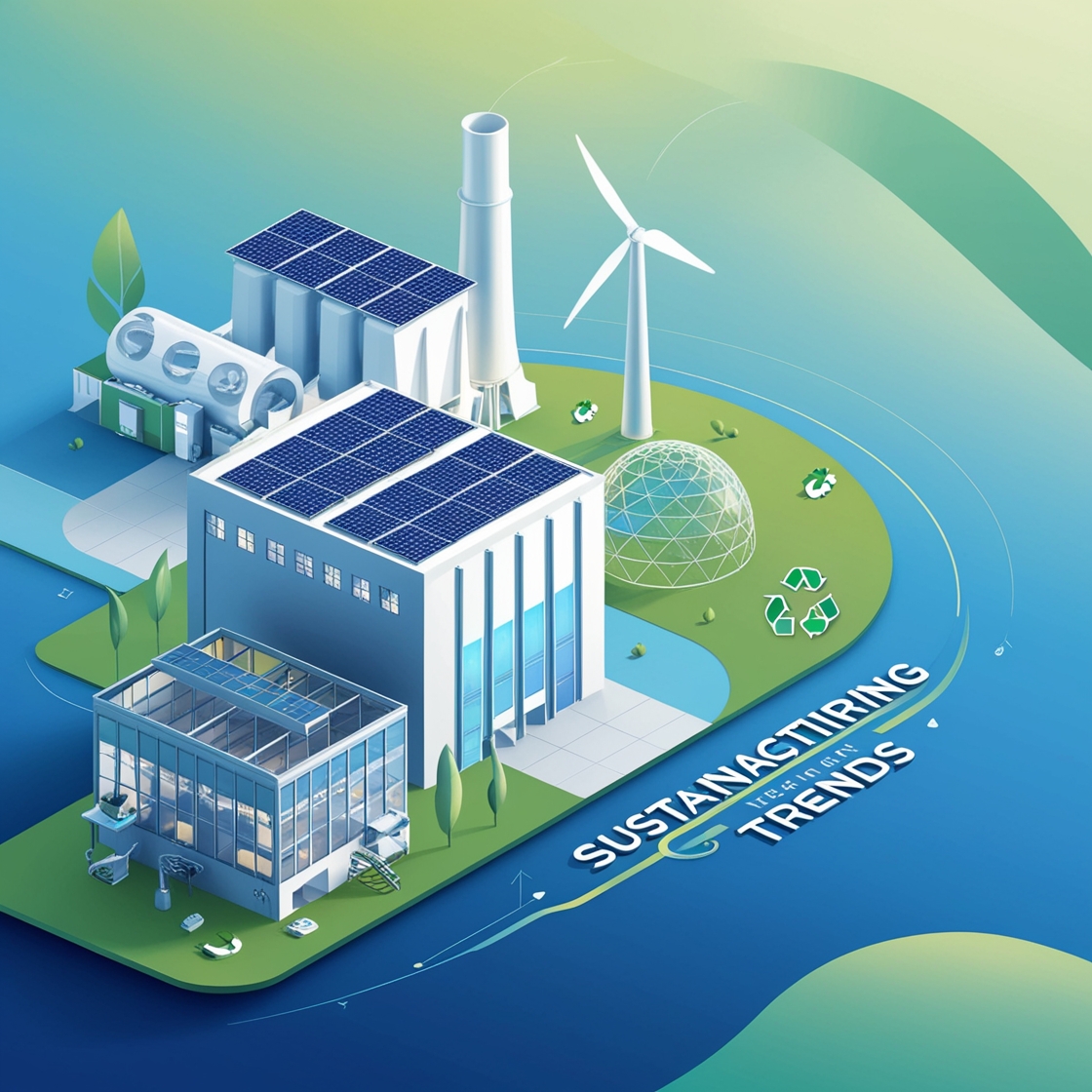Introduction
In recent years, sustainability has shifted from a buzzword to a fundamental pillar in both manufacturing and energy sectors. Companies worldwide are recognizing that sustainable practices are not only good for the planet but also beneficial for their bottom lines. This article explores the latest trends in sustainability, examining how industries are adapting to the increasing demand for eco-friendly practices.
The Growing Importance of Sustainability
What Drives the Change?
The push for sustainability is driven by several factors, including consumer demand, regulatory pressures, and the need for corporate social responsibility. Consumers are increasingly choosing brands that prioritize sustainable practices, leading companies to innovate and adapt.
The Role of Technology
Advancements in technology play a crucial role in promoting sustainability. From smart manufacturing to renewable energy sources, technological innovation is reshaping how industries operate.
Key Sustainability Trends in Manufacturing
1. Circular Economy
The concept of a circular economy focuses on minimizing waste and making the most of resources. Manufacturers are now designing products with their entire lifecycle in mind, ensuring that materials can be reused or recycled.
Benefits of a Circular Economy
- Reduced Waste: Less material ends up in landfills.
- Cost Savings: Using recycled materials can lower production costs.
- Brand Loyalty: Consumers are more likely to support brands that demonstrate environmental responsibility.
2. Green Manufacturing Processes
Manufacturers are adopting greener practices, such as using sustainable materials and reducing energy consumption. This trend includes optimizing production processes to minimize emissions and waste.
Examples of Green Practices
- Water Recycling: Many facilities are implementing systems to recycle water used in production.
- Energy-Efficient Machinery: Upgrading to energy-efficient equipment can significantly reduce energy use.
3. Digital Transformation
The rise of Industry 4.0 has introduced digital tools that enhance sustainability. IoT sensors and big data analytics help manufacturers monitor and optimize their processes, leading to less waste and more efficient use of resources.
Impacts of Digital Transformation
- Real-Time Monitoring: Companies can track their energy consumption and waste in real time.
- Predictive Maintenance: This reduces downtime and resource waste.
Key Sustainability Trends in Energy
4. Renewable Energy Adoption
The shift towards renewable energy sources, such as solar, wind, and hydro, is one of the most significant trends in the energy sector. Governments and corporations are investing heavily in renewable technologies to reduce dependence on fossil fuels.
Advantages of Renewable Energy
- Lower Carbon Footprint: Renewable energy sources produce little to no greenhouse gas emissions.
- Energy Independence: Countries can reduce reliance on imported fuels.
5. Energy Storage Solutions
As renewable energy sources become more prevalent, the need for effective energy storage solutions has grown. Technologies such as batteries and pumped hydro storage allow for energy to be stored and used when demand is high.
Importance of Energy Storage
- Grid Stability: Energy storage helps balance supply and demand.
- Increased Renewable Use: It enables greater use of intermittent renewable sources like solar and wind.
6. Smart Grids
Smart grid technology enhances energy efficiency and reliability. By integrating digital technology into the electricity network, utilities can better manage electricity supply and demand.
Benefits of Smart Grids
- Enhanced Efficiency: Real-time data helps utilities optimize energy distribution.
- Consumer Empowerment: Consumers can monitor and manage their energy use more effectively.
Collaborative Efforts for Sustainability
7. Industry Partnerships
Collaboration among industries is essential for driving sustainability. Companies are partnering with NGOs, governments, and other organizations to share best practices and resources.
Examples of Collaborative Efforts
- Sustainable Supply Chains: Companies are working together to ensure their supply chains are sustainable.
- Research Initiatives: Joint research projects focus on developing new sustainable technologies.
Challenges to Overcome
While there are many positive trends in sustainability, challenges remain. These include:
- High Initial Costs: Transitioning to sustainable practices often requires significant upfront investment.
- Regulatory Hurdles: Navigating regulations can be complex and time-consuming.
- Consumer Awareness: Not all consumers understand or prioritize sustainability, which can impact market demand.
Conclusion
Sustainability in manufacturing and energy is no longer optional; it’s a necessity. As industries adapt to these trends, they not only contribute to a healthier planet but also position themselves for long-term success. Embracing sustainability can lead to innovation, cost savings, and a stronger connection with consumers.
FAQs
1. What is the circular economy?
The circular economy is an economic model focused on minimizing waste and maximizing resource use by reusing and recycling materials.
2. How can manufacturers implement green practices?
Manufacturers can implement green practices by using sustainable materials, optimizing production processes, and adopting energy-efficient technologies.
3. What are smart grids?
Smart grids are electricity networks that use digital technology to monitor and manage electricity supply and demand, enhancing efficiency and reliability.
4. Why is renewable energy important?
Renewable energy is crucial for reducing greenhouse gas emissions, promoting energy independence, and mitigating climate change.
5. What challenges do companies face in adopting sustainable practices?
Challenges include high initial costs, regulatory complexities, and varying levels of consumer awareness and demand for sustainability.
